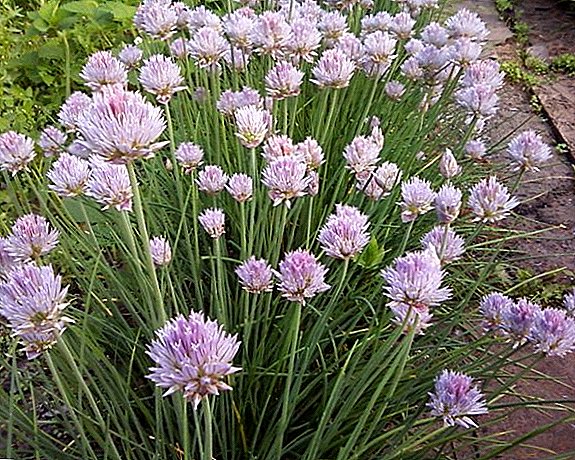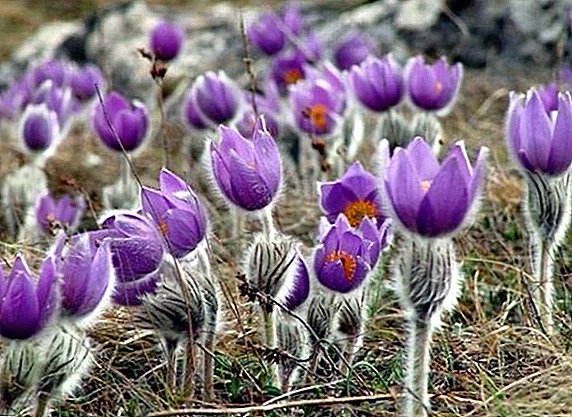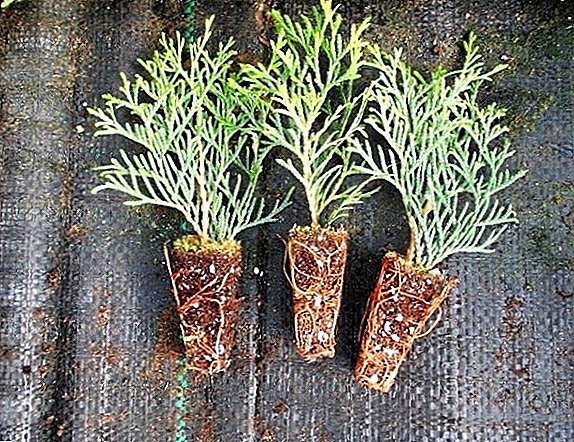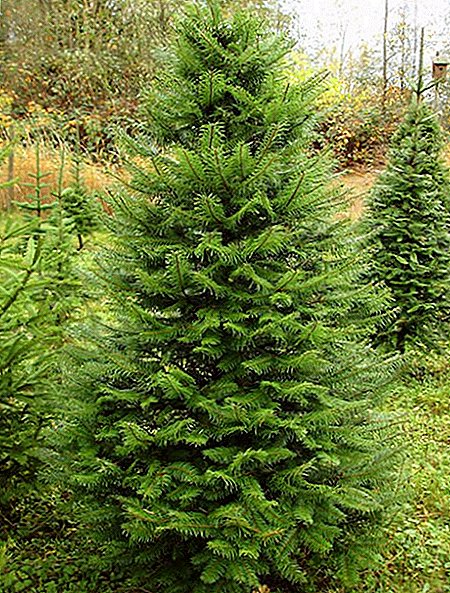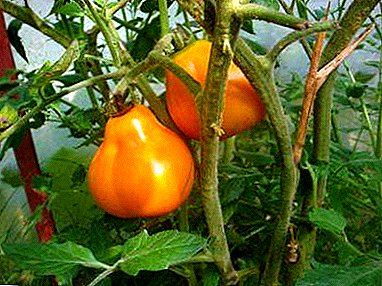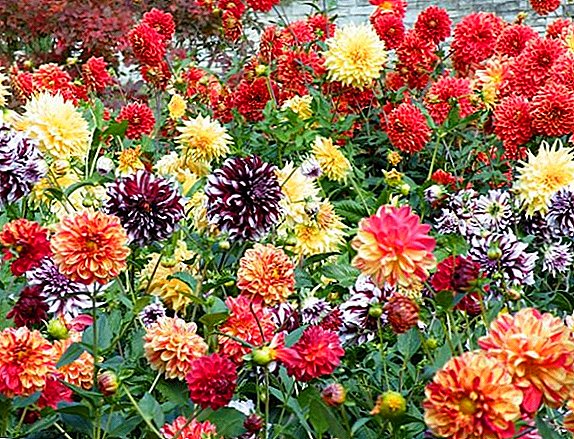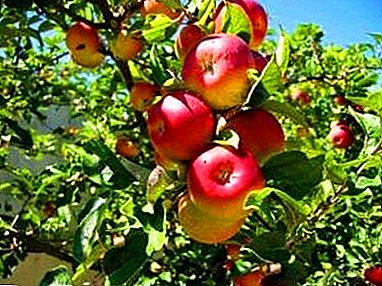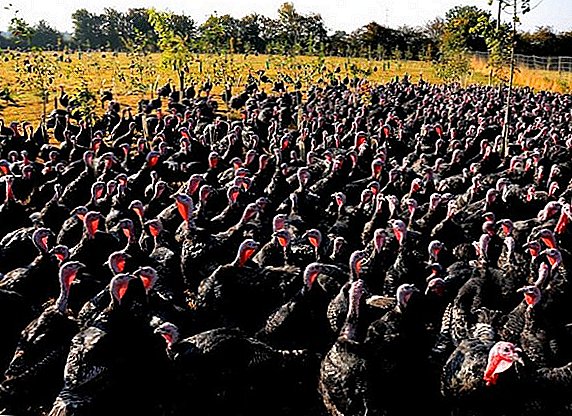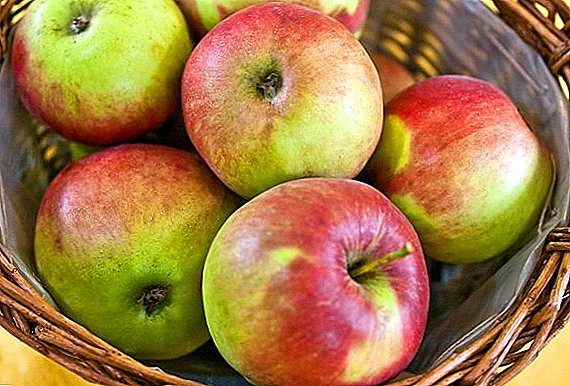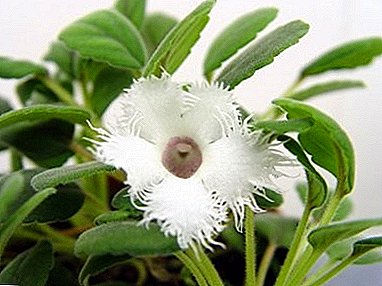
The botanical name of this plant comes from the Greek word episkios - "shaded" and corresponds to the places of its natural growth.
Evergreen herbaceous descriptions spread along the surface of the soil in the shade of the majestic tropical trees of South America.
In room culture, this species is represented as the original forms, and numerous spectacular hybrids, combining a thin pattern of colorful foliage with beautiful flowering.
General description of the plant
Epice - these are unpretentious thermophilic vines with a superficial root system, a thick creeping underground stem and numerous aboveground whiskers with daughter leafy rosettes.
Leaf plates - large, oval, pubescent - have a color of a wide range of green and brown tones with light, iridescent, openwork veins and spots. Ripe leaves, without losing decorative, are stored on the stem for several years.
From late spring to late autumn. Apices are decorated with bright flowers resembling tubular bells: snow-white, bluish, thick pink, fiery red, sunny orange. In some varieties of these plants, the edges of the petals are fringed.
This video provides general information about the plant:
A photo
The photo shows a lissa Episcia, with proper care at home:




Home care
All species and varieties have no poisonous juice or other harmful properties, but in a room a plant can suffer from drafts, tobacco smoke or products of gas combustion.
The video details the care at home:
Lighting
 The inhabitant of the lower tier of Latin American tropical undergrowth requires bright, but mostly diffused light.
The inhabitant of the lower tier of Latin American tropical undergrowth requires bright, but mostly diffused light.
Optimal lighting give windows of east and west orientation.
In the southern windowsills in the spring and summer, shading is necessary from 10 to 14 hours, and in the north, especially in the winter, more light will be needed.
Reference! In bright rooms with bright natural or intense artificial lighting. Records can be grown in pots attached to walls.
Temperature
A heat-loving plant can withstand a temperature of + 35 ° C without damage to itself, however, the optimal interval throughout the year is from 18 to 25 degrees.
Attention: The critical minimum temperature is + 16ºС.
Episi should be protected from drafts and temperature drops, especially dangerous for it in the autumn-winter period.
Container and soil
Plants, in accordance with the surface type of the root system, are placed in low, wide pots of small size. Even for mature Episci, the diameter of the tank does not exceed 20-22cm. To remove excess moisture in the bottom of the container must have a drainage hole.
 Loose, neutral or slightly acidic, moderately fertile soil is required.
Loose, neutral or slightly acidic, moderately fertile soil is required.
You can use ready-made primer for violets and Gesneria, with which the Epice are related, or prepare a mixture of two parts of leafy land with one part of peat and the same amount of coarse sand.
It is also useful to add chopped sphagnum moss and crushed charcoal.
Landing
Place a drainage layer of expanded clay or small pebbles at the bottom of the landing tank. Then you should pour a layer of prepared soil, and on top of it to place the straightened root system.
Fill the soil mixture, gently sealing it and not digging down the root neck of the plant, and then pour it on the "new home".
Transfer
Replant well-growing specimens annually. At the same time, plants can be transshipped into a larger tank and filled up with fresh soil, but once in two or three years, a healing transplant is needed with complete replacement of the ground.
Important! After transplantation, the plant will require increased air humidity and moderate shading during the week.
The video shows how to properly transplant at home:
Watering and humidity
The ground for Episcia should not dry out or ooze excess moisture. The optimal frequency of irrigation with soft water at room temperature in spring and summer - from two to four times a week, in winter - somewhat less.
Important! At the same time, water should not be allowed to fall on the pubescent leaves, otherwise brown spots will form on them. Possible lower watering.
 These plants, especially young ones, need moist air. Instead of spraying, to prevent water droplets from falling on the leaves, they moisten the air due to evaporation.
These plants, especially young ones, need moist air. Instead of spraying, to prevent water droplets from falling on the leaves, they moisten the air due to evaporation.
To do this, place the pot on a tray with wet small stones - pebbles or expanded clay.
If the Episcia grows in a hanging container, sphagnum moss is laid between the walls of the pots and the pot, and then moistened.
Ideal moisture conditions can be created in a mini-greenhouse or a glazed garden terrarium.
Top dressing
In the period of active growth and flowering, in spring and summer, fertilizing is carried out every two weeks.
Attention: at the same time, both organic fertilizers and standard mineral mixtures for flowering plants are diluted with twice the usual amount of water: they need a moderate dosage of nutrients.
Autumn and winter feeding is not carried out.
Bloom
A native of the tropics, not having a pronounced period of rest, can effectively bloom from spring to late autumn.
 If little buds are formed or they are not formed at all, the reasons lie in the lack of care, namely:
If little buds are formed or they are not formed at all, the reasons lie in the lack of care, namely:
- the soil is overdry regularly;
- top dressing contains too much nitrogen;
- air is dry and / or cold;
- the plant does not have enough light.
Under optimal conditions of maintenance, the flower develops well and blooms continuously for a long time every year.
Pruning
In order to form a lush bush of beautiful falling form, the shoots are shortened as soon as the plant blossoms.
In this case, the sockets of the trimmed shoots can be planted in the pot of the mother plant, ensuring the formation of a dense stream of new shoots.
Dried leaves should be promptly removed.
Breeding
Vegetative propagation by affiliated rosettes and stem cuttings is easiest. All signs of the mother plant are preserved. The seed method of reproduction is more laborious, and the varietal characteristics in this case are lost.
The video provides a detailed breeding guide:
Seeds
 Seeds are sown at the end of winter or in the middle of summer. In order to obtain young specimens, which flourish in the year of sowing, seeds are germinated in January-February.
Seeds are sown at the end of winter or in the middle of summer. In order to obtain young specimens, which flourish in the year of sowing, seeds are germinated in January-February.
June and July seedlings will only bloom next year.
Fine seed material is scattered over the surface of a moistened light substrate consisting of peat and sand in equal shares.
Sowing is covered with glass or transparent plastic film, aerated, moistened and kept at a temperature not lower than 20ºС. Shoots Episci appear on the tenth or twelfth day.
After two or three weeks they can dive, and then, as they grow, they can be seated in separate containers.
Leaf rosettes
During the period of active spring growth the young rosette, without cutting off the stem-mustache connecting it with the main plant, prikopat in a separate pot with a light soil substrate consisting of sand in half with peat. At a temperature of 23-24ºС rooting takes no more than 10 days. After that, the mustache is cut and planted separated plant in a permanent place.
Stem cuttings
Spring harvested stalk with three or four nodes from the side of the shoot, not having its own mustache processes. The stalk can be pre-rooted in water or immediately landed in a pot with light soil, covered with polyethylene, ventilated, moistened and maintained at an optimum temperature of 22-24ºС. Rooting of the Episia occurs within 10 days.
Application
 Decorative throughout the year Episcuy, forming a blooming carpet of abundant daughter shoots, is used as a spectacular ampella plant.
Decorative throughout the year Episcuy, forming a blooming carpet of abundant daughter shoots, is used as a spectacular ampella plant.
As such, it can be located on the side surfaces of window openings, as well as on walls that are well lit with natural or artificial light.
In addition, this plant can be a decoration of various "gardens behind glass" - terrariums and mini-greenhouses. In this case, the Episcia will need to be replaced annually with a young copy, as it is growing rapidly.
- Syngonium;
- Dikhorizandra;
- Tetrastigma Vouinier;
- Duchenei Tutti Frutti Indian;
- Ruellia;
- Setcreasia Violet (purple);
- Money plant (Potos);
- Tolmia;
- Tunbergia;
- Philodendron.
Possible problems, their causes and elimination
The bright color of the leaves is lost, the foliage and flowers dry prematurely with an excess of intense sunlight. It is necessary to pritenit or rearrange the plant.
Brown spots on the leaves appear due to watering with cold water. It should be at room temperature.
Attention! The leaves turn yellow with an excess of fertilizer. Episations need moderate feeding.
Gray bloom on leaves and flowers is the result of fungal infections. They hit the plant with the stagnation of moisture in the old, not changing the soil for a long time.
The edges of the leaves turn up when there is not enough regular watering. It should adjust its mode.
The tips of the leaves dry up, young shoots are shallow in dry air. It is required to moisten it additionally by placing the container on a pallet with wet pebbles or impose it on wet sphagnum.
Foliage is reduced in size, shoots stretched with a lack of light. Need rearrangement or dosochivanie plants.
Diseases and pests
 For episodes, rot and fungal infections are dangerous. The plant affected by them remains sluggish in a sufficiently moist soil.
For episodes, rot and fungal infections are dangerous. The plant affected by them remains sluggish in a sufficiently moist soil.
The prevention of these diseases is the optimum moisture regime and the immediate removal of water accumulated in the pan after watering.
If an infection has occurred, it is necessary to prepare cuttings from healthy parts of the Episcia and root them. The rest of the plant and soil should be disposed of, the container must be disinfected.
Important! On leathery pubescent leaves and stems, occasionally aphids, scale insects, thrips, mealybugs and whitefly can settle.
The only effective means of combating these pests are systemic directional insecticides that should be used in accordance with the instructions for the preparation.
Episcia is a spectacular ample plant for well-lit warm rooms. Under simple conditions of optimal content, variegated shoots bloom brightly and continuously each year.


